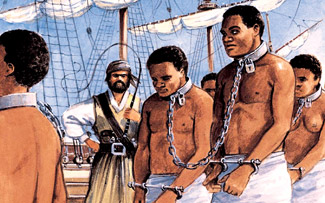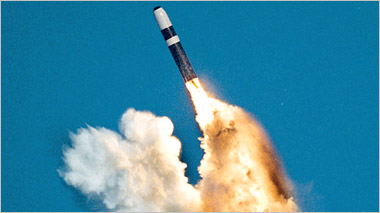|
World Day observances:
No slaves, no nukes!
International Day for the Remembrance
of the Slave Trade and its Abolition
The United Nations' (UN) International Day for the Remembrance of the
Slave Trade and its Abolition is annually observed on August 23 to
remind people of the
 tragedy
of the transatlantic slave trade. It gives people a chance to think
about the historic causes, the methods and the consequences of the slave
trade. It was the American President, Abraham Lincoln who was
responsible for the abolition of the slave trade in the United States of
America. tragedy
of the transatlantic slave trade. It gives people a chance to think
about the historic causes, the methods and the consequences of the slave
trade. It was the American President, Abraham Lincoln who was
responsible for the abolition of the slave trade in the United States of
America.
Each year the UN invites people all over the world, including
educators, students and artists, to organise events that centre on the
theme of this day
Background
In late August, 1791, an uprising began in Santo Domingo (today Haiti
and the Dominican Republic) that would have a major effect on abolishing
the transatlantic slave trade. The slave rebellion in the area weakened
the Caribbean colonial system, sparking an uprising that led to
abolishing slavery and giving the island its independence. It marked the
beginning of the destruction of the slavery system, the slave trade and
colonialism.
International Day for the Remembrance of the Slave Trade and its
Abolition was first celebrated in many countries, in particular in
Haiti, on August 23, 1998, and in Senegal on August 23, 1999. Each year
the United Nations Educational, Scientific and Cultural Organization
(UNESCO) reminds the international community about the importance of
commemorating this day. This date also pays tribute to those who worked
hard to abolish slave trade and slavery throughout the world.
International Day against Nuclear
Tests
The United Nations's (UN) International Day against Nuclear Tests
brings public awareness and education about the effects of global
nuclear weapon tests. The day aims to end nuclear testing and to promote
peace and security. The International Day against Nuclear Tests aims to
raise people's awareness on the need to prevent nuclear catastrophes to
avert devastating effects on humankind, the environment and the planet.
Many people use the day as an opportunity to share their perspective on
the issue of nuclear weapons and testing.
There is a lot of concern today about such nuclear testing as many
countries are currently engaged in such activities.

History
The history of nuclear testing began on July 16, 1945, when an atomic
bomb was used at a desert test site in Alamogordo, New Mexico, in the
United States. More than 2000 nuclear tests were carried out worldwide
between 1945 and 1996. Nuclear weapons tests are generally broken into
different categories reflecting the test's medium or location:
Atmospheric tests, Underwater tests, Underground tests.
Over the years, there have been calls to ban nuclear test to ensure
the protection of people's lives and the environment around them.
The UN approved a draft resolution in late 2009 for an international
day against nuclear tests to raise public awareness about the threats
and dangers of nuclear weapons. It was also hoped that UN's member
states would move towards the idea of nuclear disarmament.
The International Day against Nuclear Tests was declared to be
annually held on August 29, which marks the closing of one of the
world's largest nuclear test sites (in Kazakhstan) in 1991.
The day is devoted to enhancing public awareness and education about
the effects of nuclear weapon test explosions or any other nuclear
explosions. It also promotes the need for a nuclear weapon-free world.
The day's first official observance is marked for August 29,this year. |

